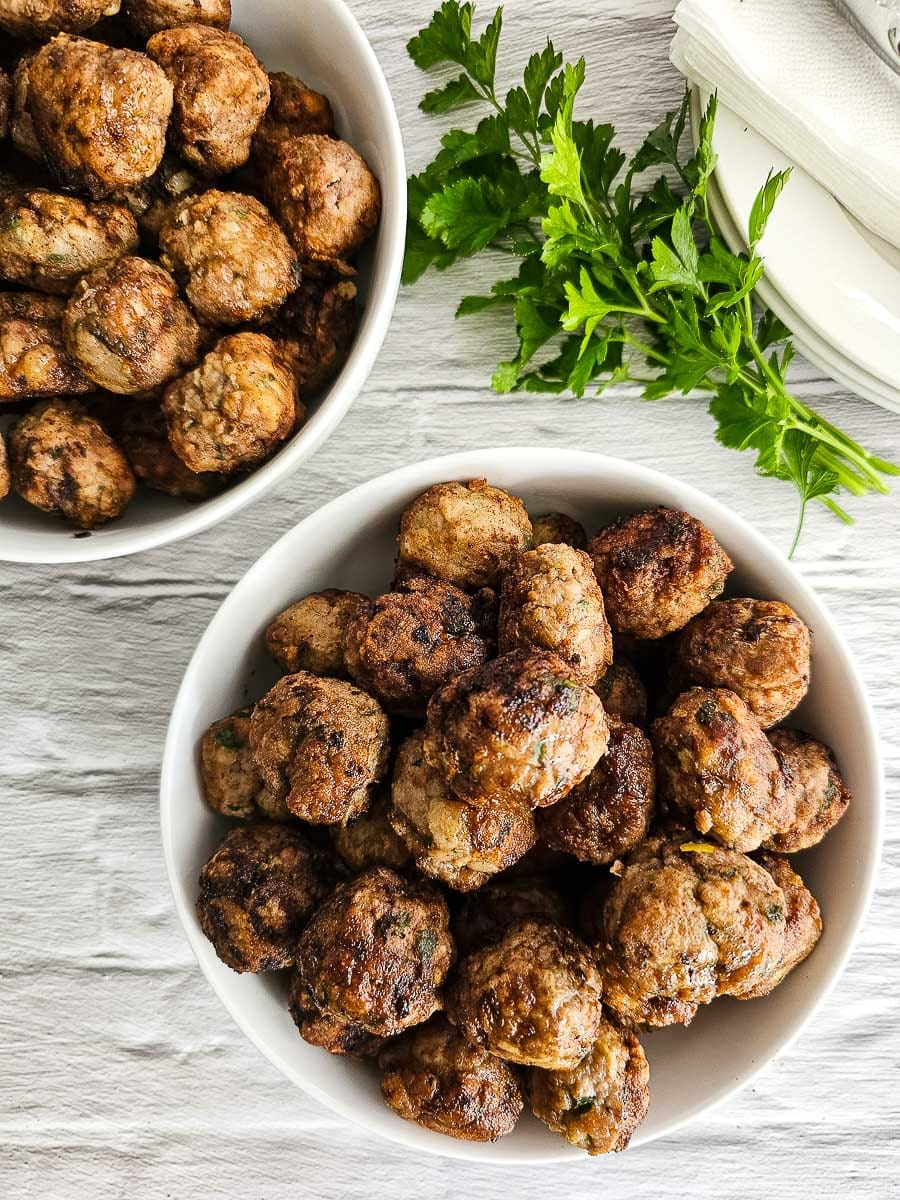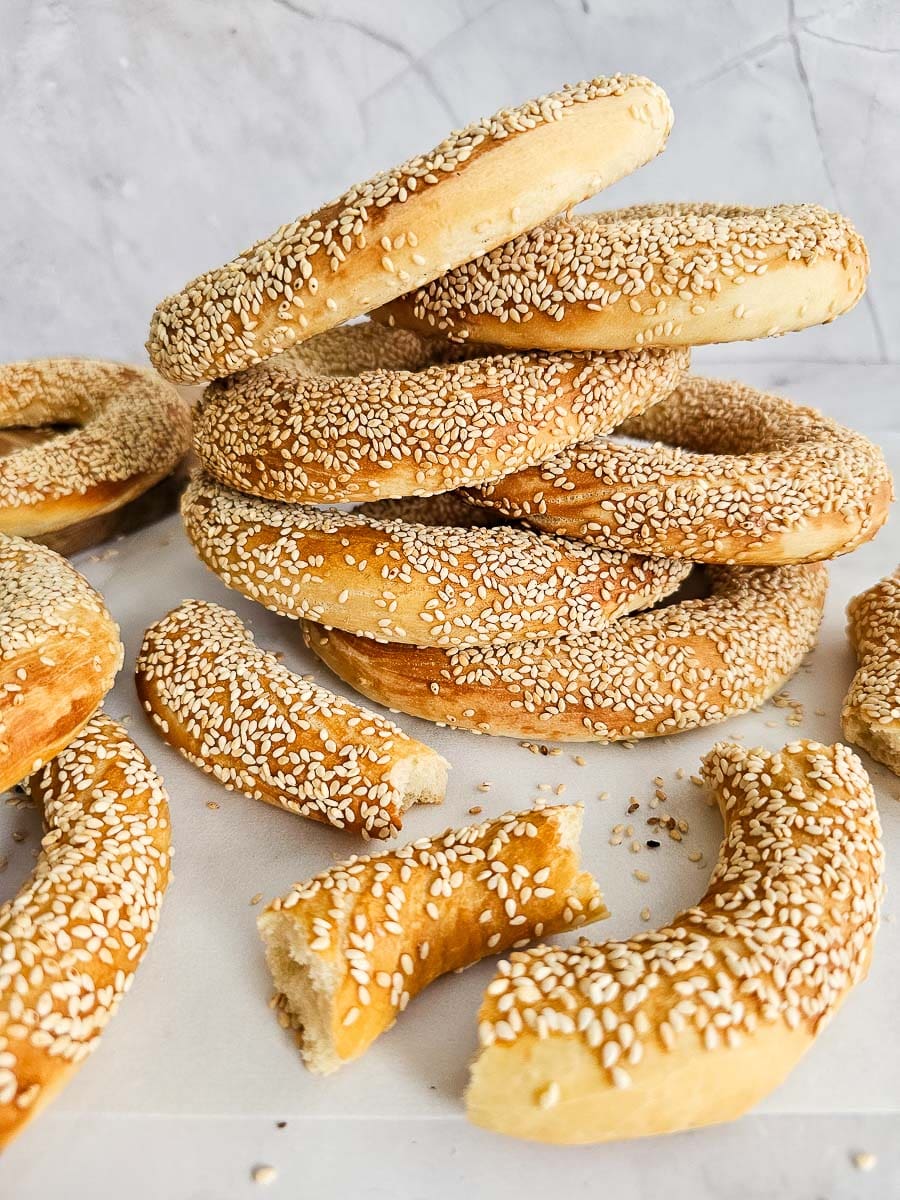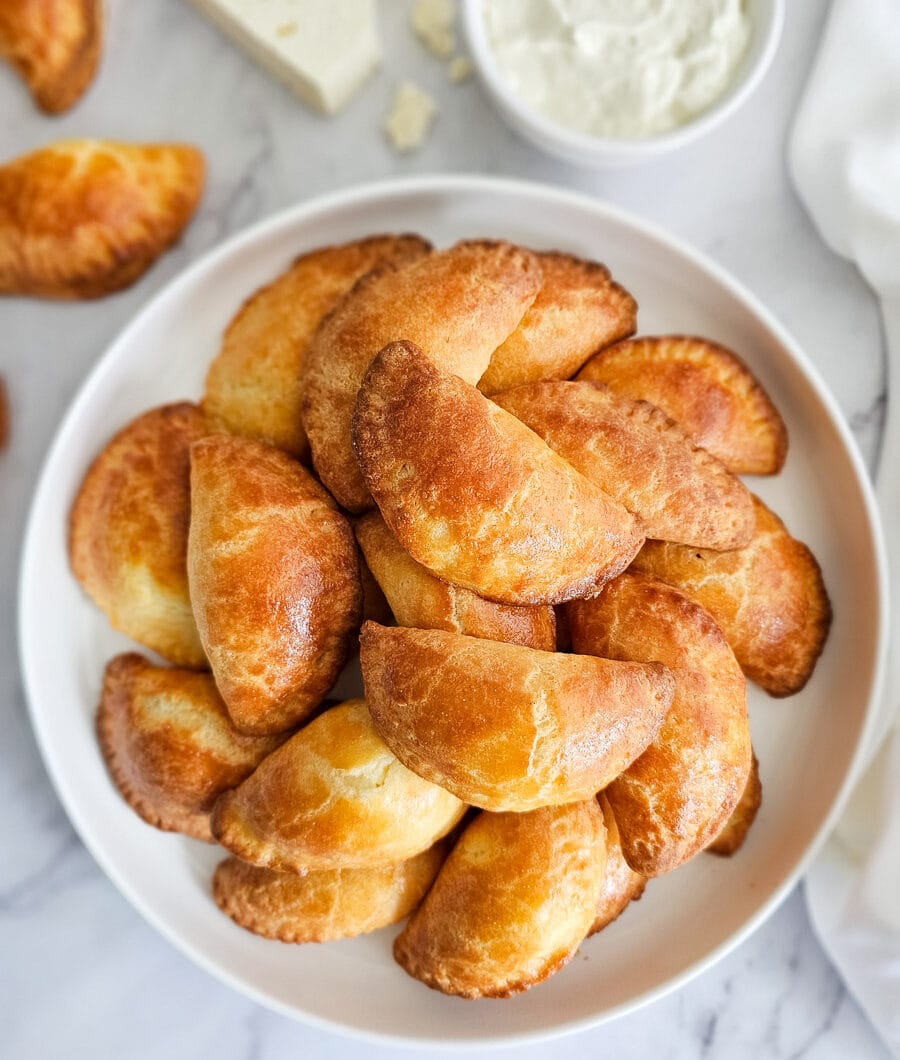These Mini Greek Cheese Pastries are the perfect little snack. The pastry is made with Greek yoghurt, making them soft on the outside with a simple, cheesy filling.
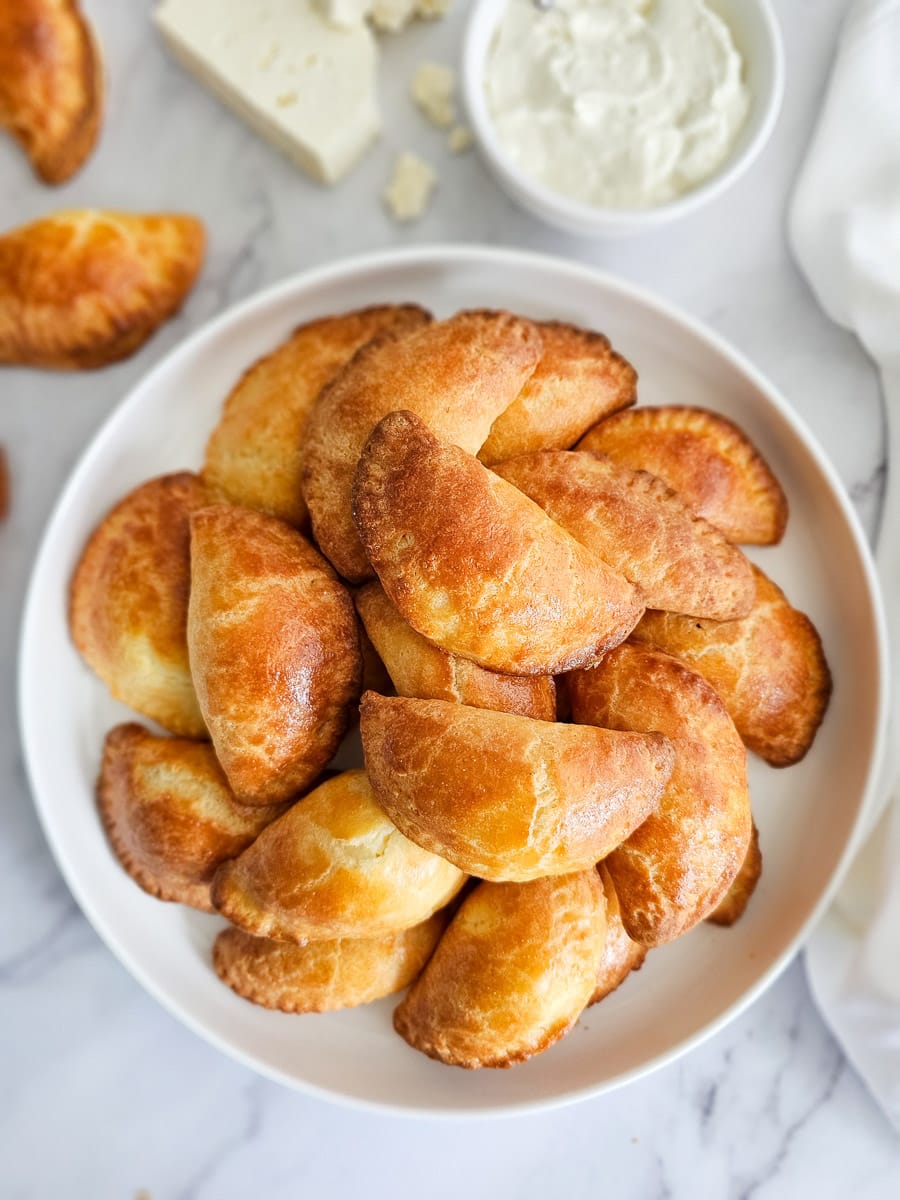
Greek yoghurt is the secret ingredient behind these pastries, giving the dough its signature softness and delicate tang. In Greek, they’re known as Tiropitakia Kourou (τυροπιτάκια κουρού), which literally means “little cheese pies made with yoghurt pastry,” and they’re a much-loved favourite in many Greek homes. Perfect for parties, picnics, or even packed into lunchboxes, these Mini Greek Cheese Pastries are always a hit.
What I love most about these pastries is their versatility. My mum sometimes adds a small amount of finely grated parmesan cheese into the dough itself, which adds a hint of cheese flavour to the dough. You can play around with the cheese filling, adjusting the quantities or swapping in your favourite cheese, and they’ll still turn out beautifully. If you have any leftover filling, you can freeze it for later or incorporate it into another dish. I like to add it to my omelettes – it tastes amazing! You could also use the filling for another type of tiropitakia we make, like these Greek Cheese Triangles. Some people like to sprinkle sesame seeds on top of the Mini Greek Cheese Pastries, or add a little nutmeg or fresh herbs to the filling, but I usually prefer them as they are: simple and full of cheesy goodness. At Easter, my mum doubles the recipe to make plenty for the whole family, shaping some into folded half-moons like these ones, and others into open tarts (recipe coming soon). No matter the shape, they’re always a hit.
Ingredients for Mini Greek Cheese Pastries (Tiropitakia Kourou)
For the pastry
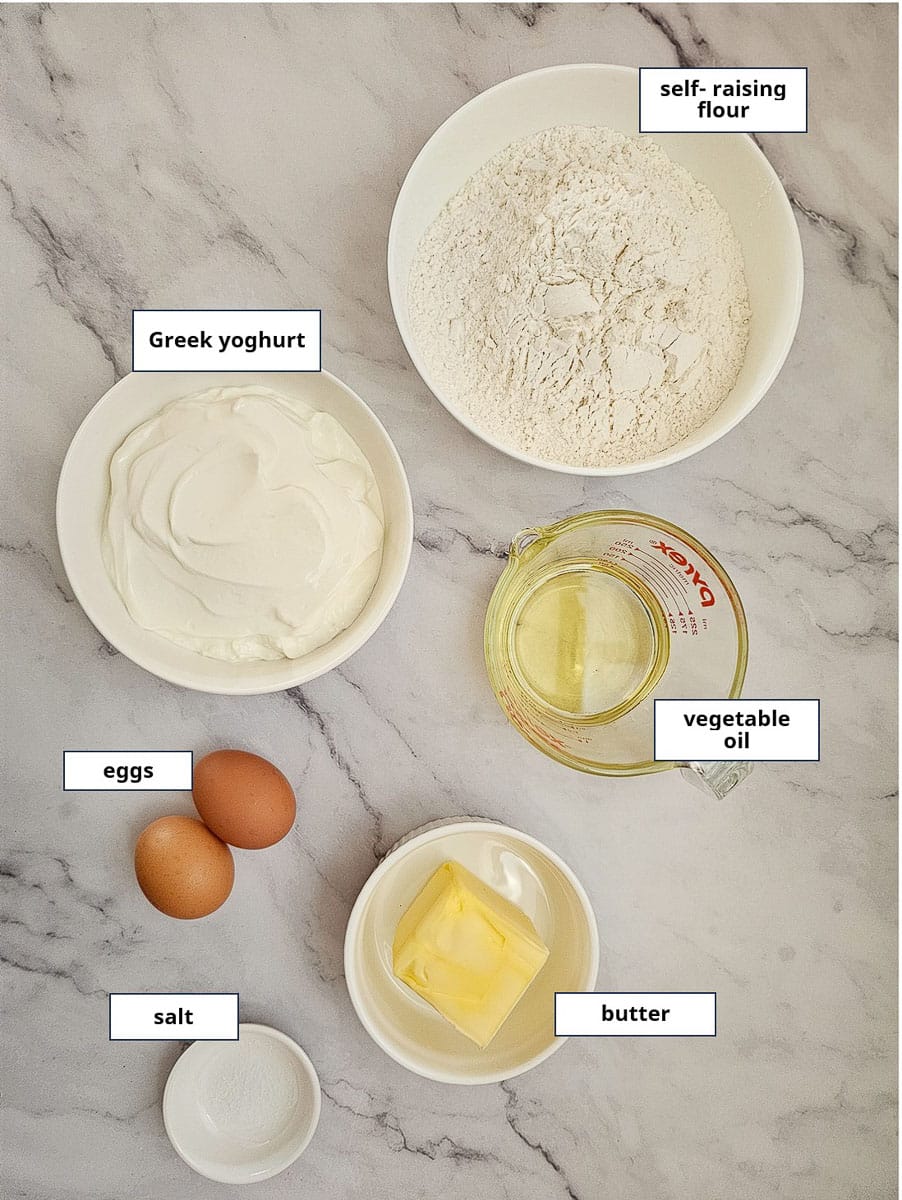
- Melted butter: Adds richness and flavour to the pastry, giving it a tender, buttery taste. I use salted butter, but you can substitute with unsalted. Just add a little more salt to the dough.
- Vegetable oil: Helps keep the dough moist, soft and prevents it from drying out. A light olive oil also works well. I don’t use extra-virgin olive oil for this recipe as it can overpower the flavour.
- Greek yoghurt: The key ingredient that gives the pastry its signature softness and subtle tang. Be sure to use real Greek yoghurt, which has been strained for thickness, not “Greek style” yoghurt. If you only have Greek style yoghurt on hand, strain it through a cheesecloth (or a clean kitchen towel) first to remove excess liquid and thicken it.
- Eggs: Provide structure and help bind the dough together. They also add a light richness to the pastry.
- Salt: Balances the flavours and enhances the taste of the dough.
- Self-raising flour: Creates a light and fluffy pastry. As a substitute, you can use plain flour with two teaspoons of baking powder per cup of flour.
For the filling
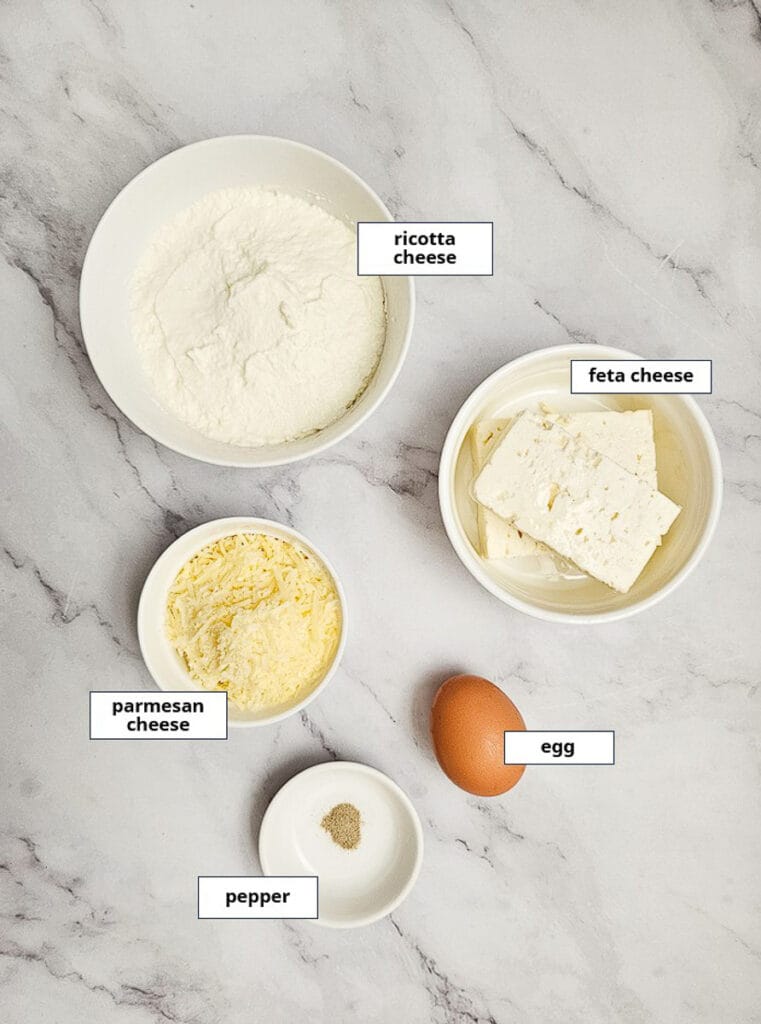
- Feta cheese: Brings a salty, tangy flavour to the pastries.
- Ricotta cheese: Adds creaminess and balances the saltiness of the feta. I usually buy my ricotta from the deli, as it is generally thicker than the container version and holds its shape better. You can substitute with fresh myzithra, if available. Fresh myzithra is sometimes called the Greek version of ricotta cheese. It has a very similar texture but is usually made from sheep or goat’s milk, giving it a richer, slightly tangier flavour than ricotta.
- Parmesan cheese: Enhances the flavour.
- Egg: Binds the filling together so it stays creamy.
- Pepper: Adds a subtle spice to balance the richness of the cheese. Nutmeg or herbs can also be added if you’d like a variation.
- Egg (for glazing): Brushed on top before baking to give the pastries their golden, glossy finish.
How to make Mini Greek Cheese Pastries (Tiropitakia Kourou)
To make the dough
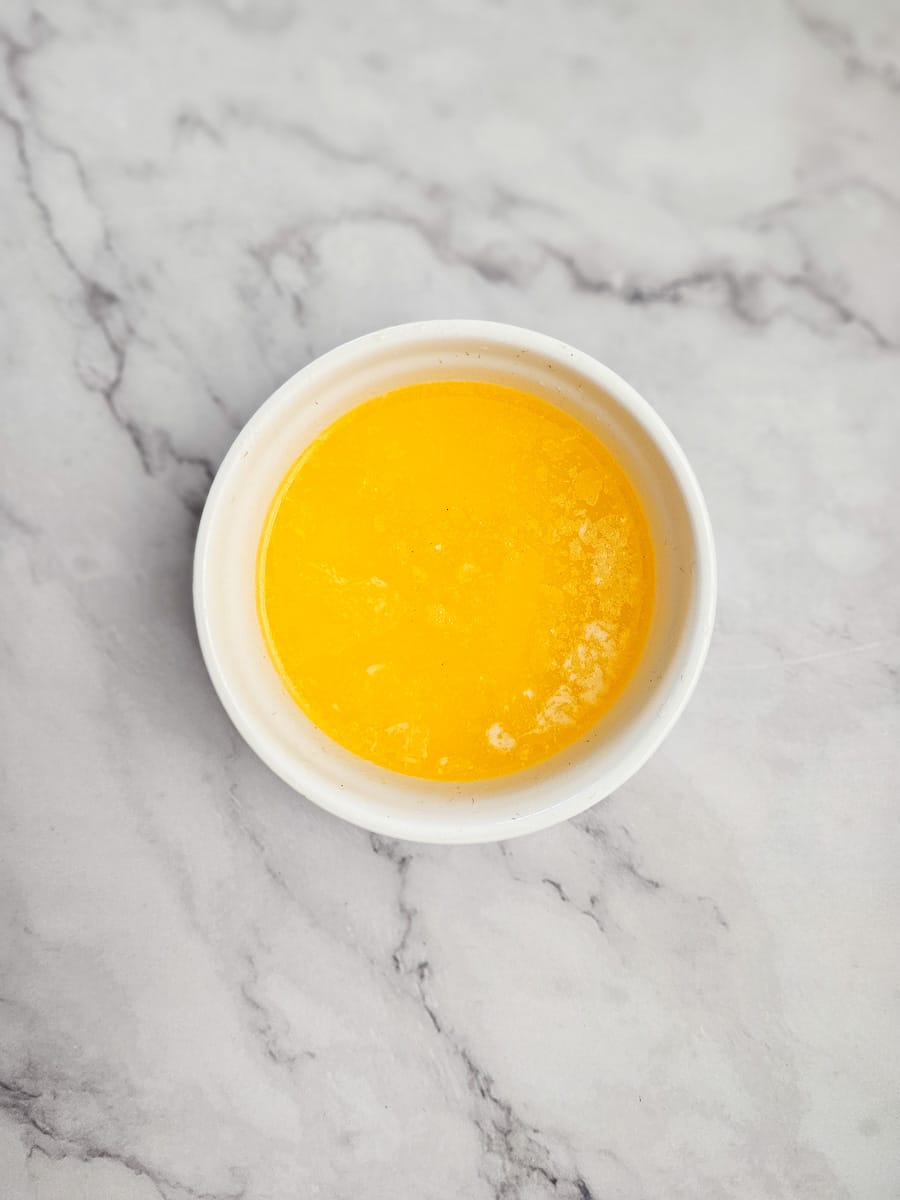
1. Melt the butter and let it cool slightly.
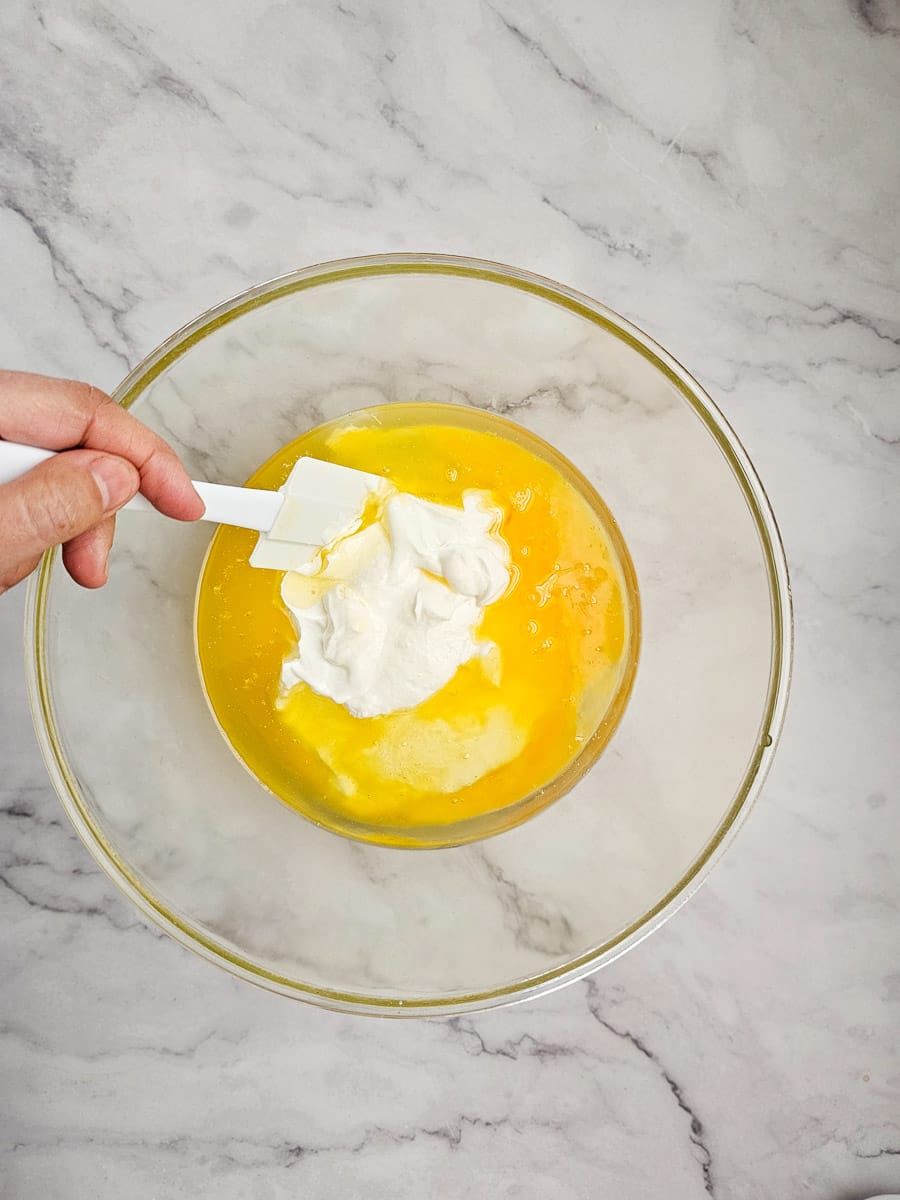
2. In a large bowl, combine the melted butter, oil, lightly beaten eggs, yoghurt and parmesan cheese. Mix until smooth.
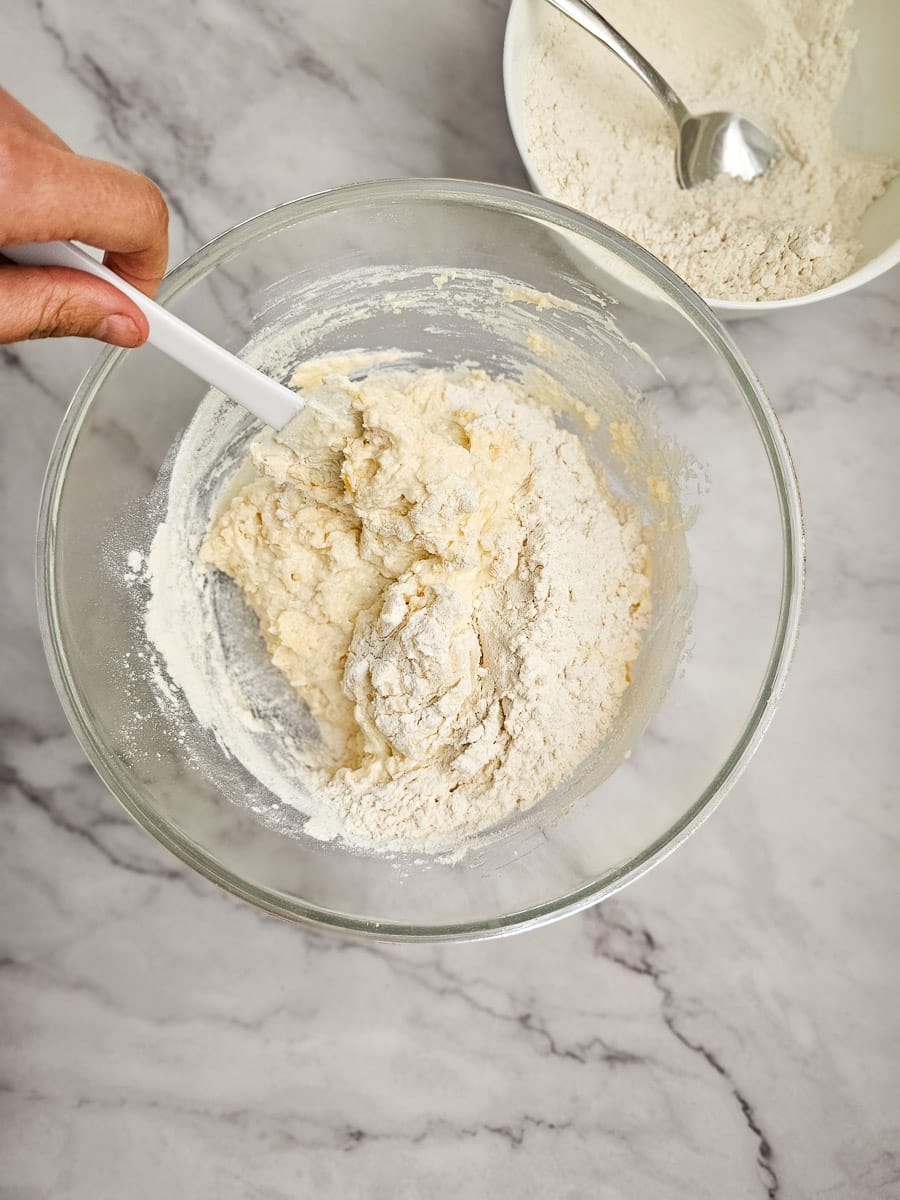
3. Add the self-raising flour gradually, one cup at a time, until a soft, smooth dough forms.

4. The dough will feel slightly oily but should not stick to your hands. Cover and set the dough aside while you prepare the filling.
To make the filling

1. In a separate bowl, combine the crumbled feta cheese, ricotta cheese, parmesan cheese, egg and pepper.
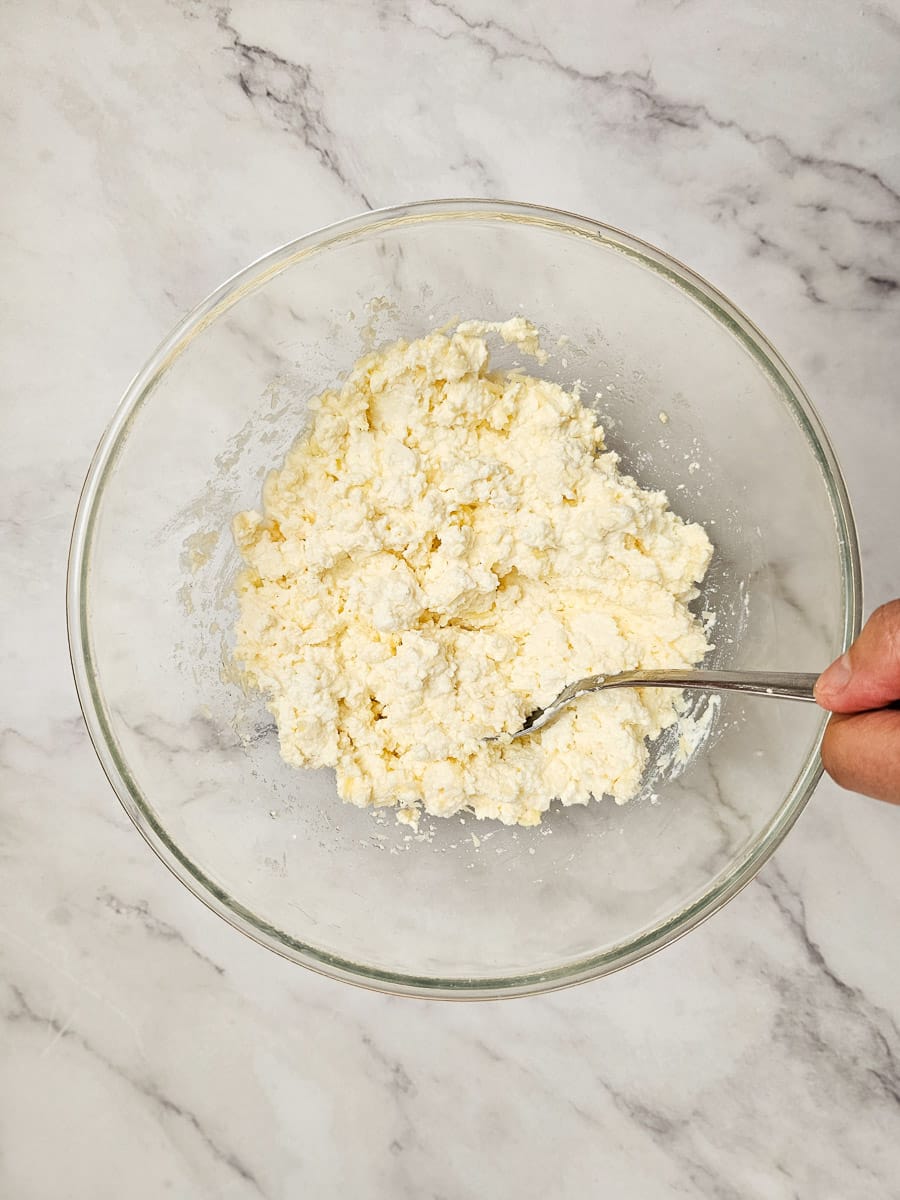
2. Mix until well combined.
Assemble and bake
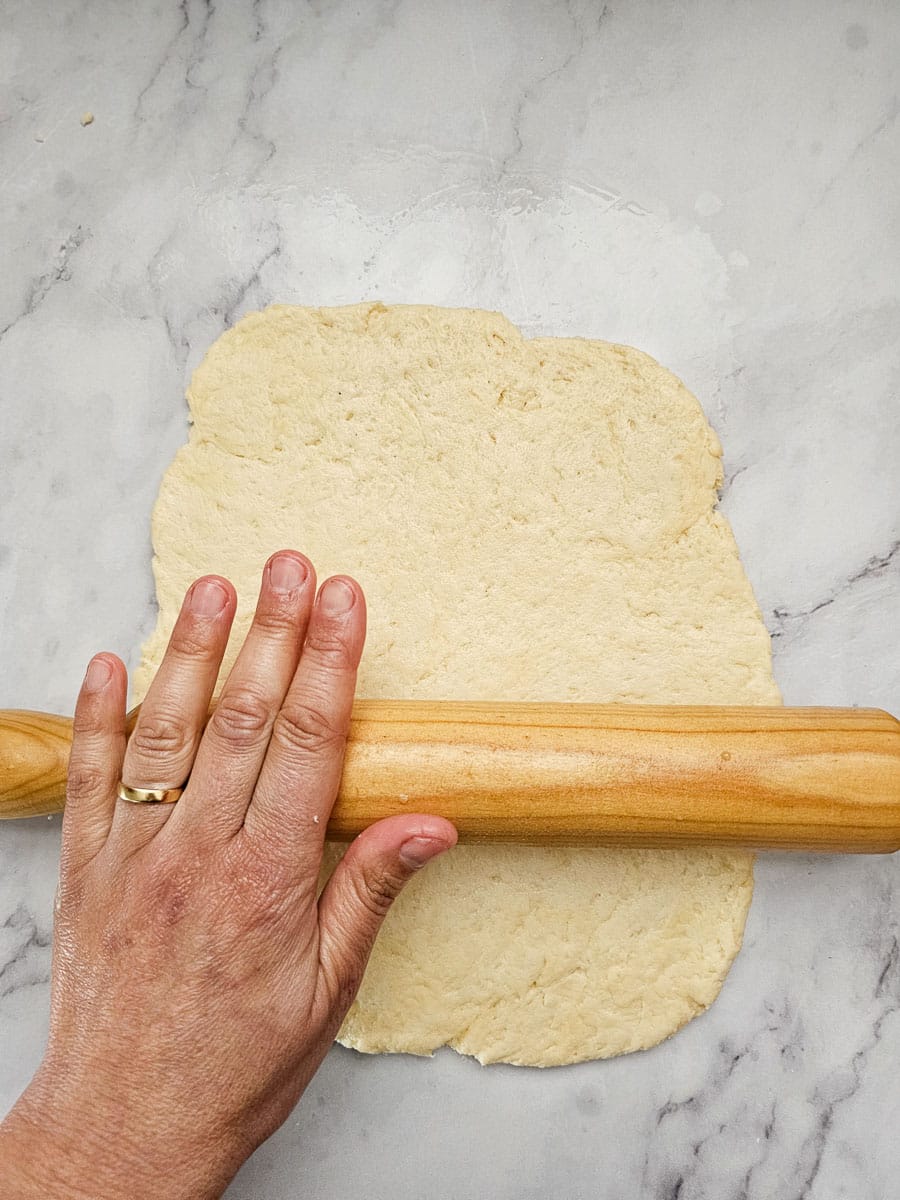
1. Divide the dough into three portions to make it easier to roll. Roll one portion out to about 30-40cm (12–16 inches) in diameter.
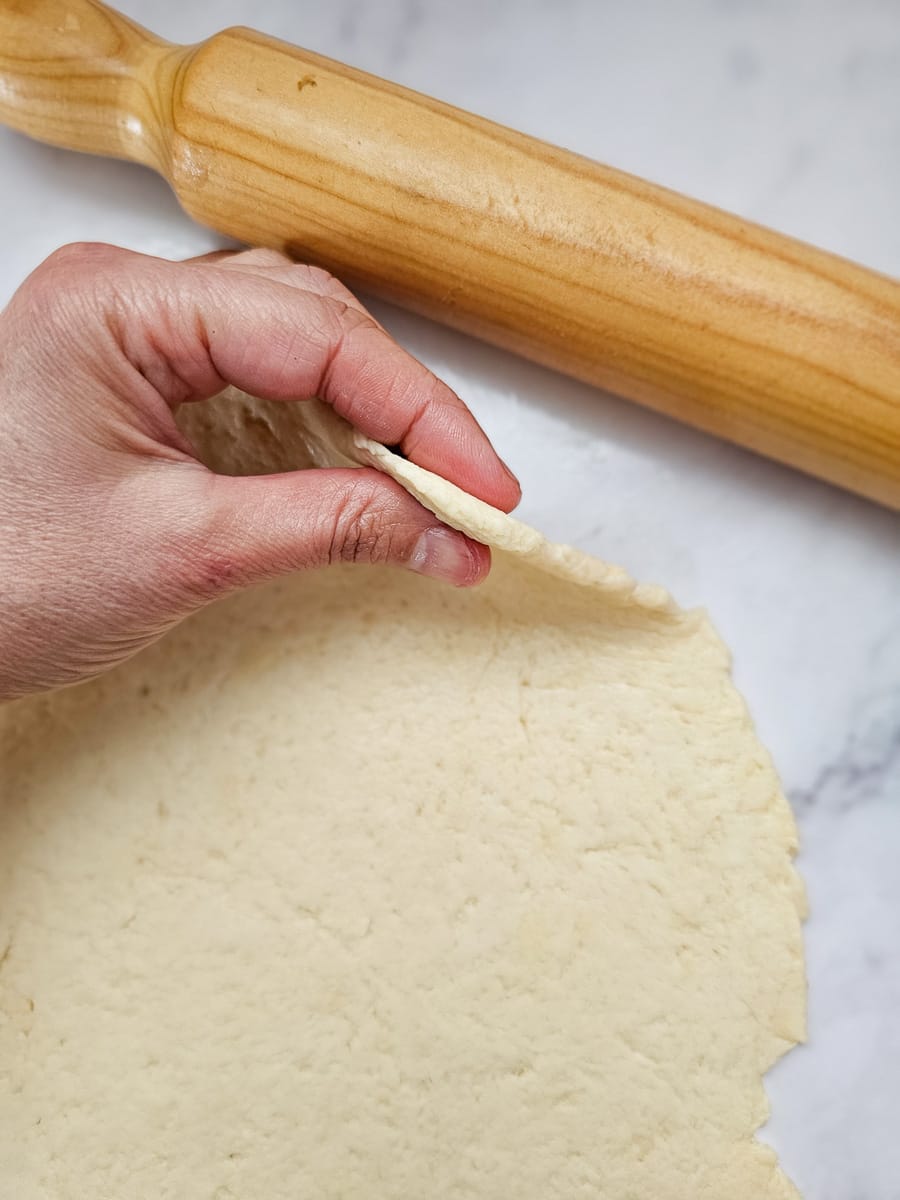
2. Roll thinly to about 3mm (1/8 inch) thickness.
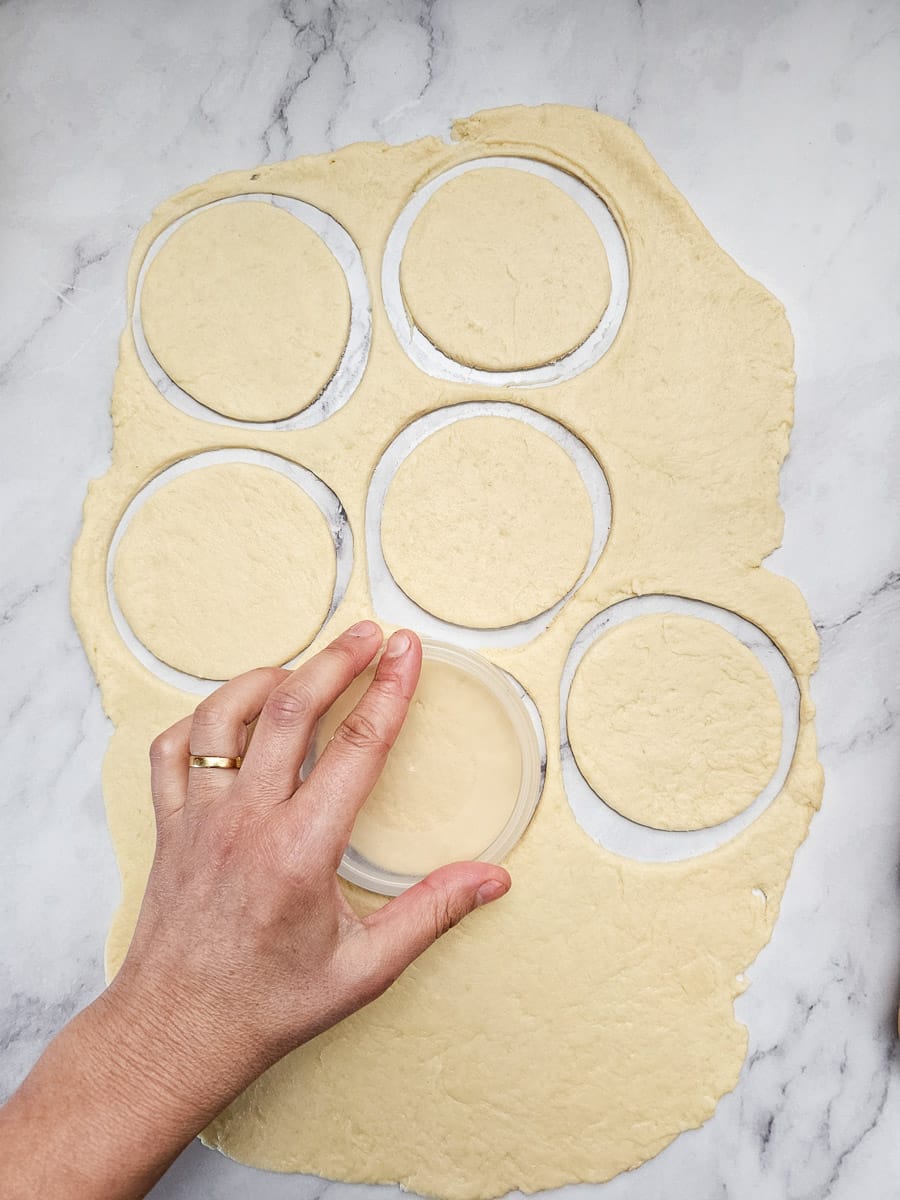
3. Using an 8-10cm (3-4 inch) round cutter, cut circles from the dough.
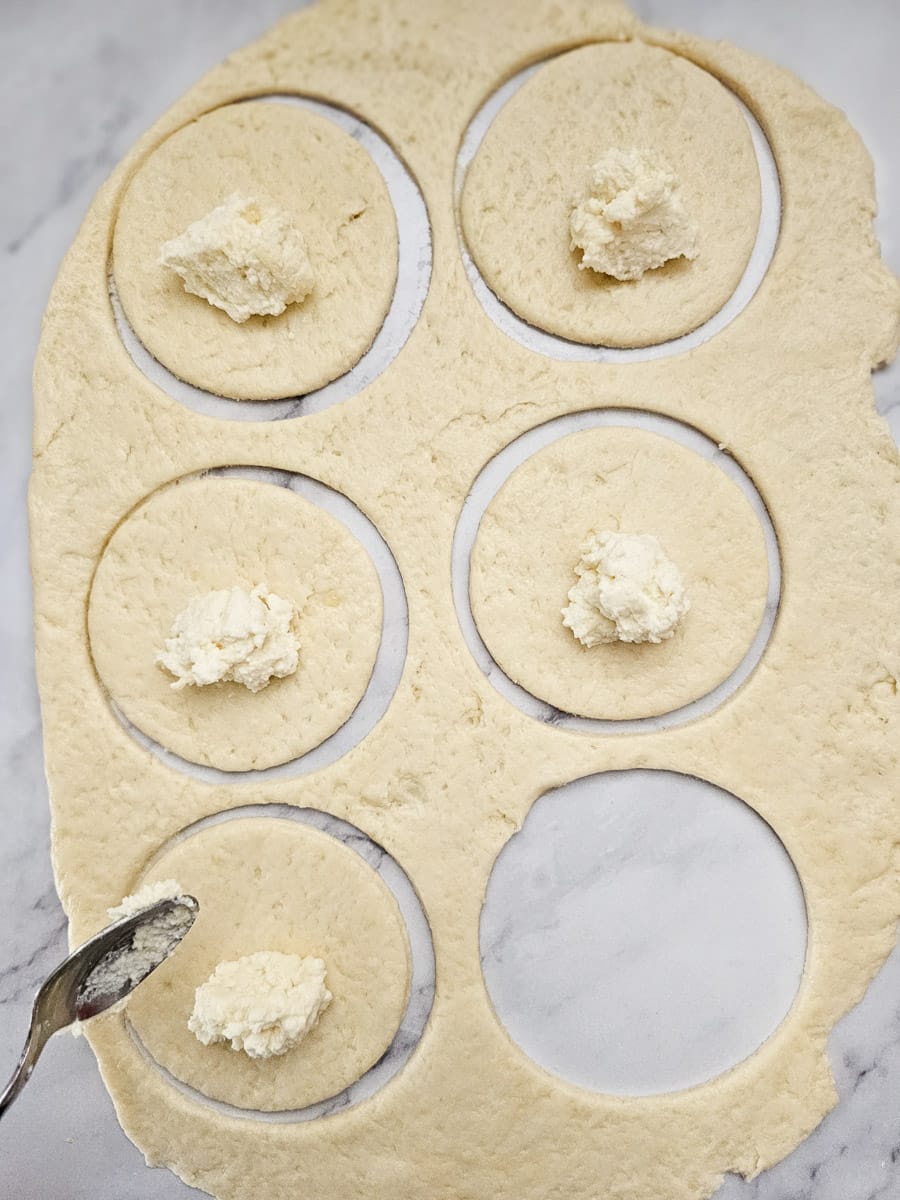
4. Place one teaspoon of filling in the centre of each circle.
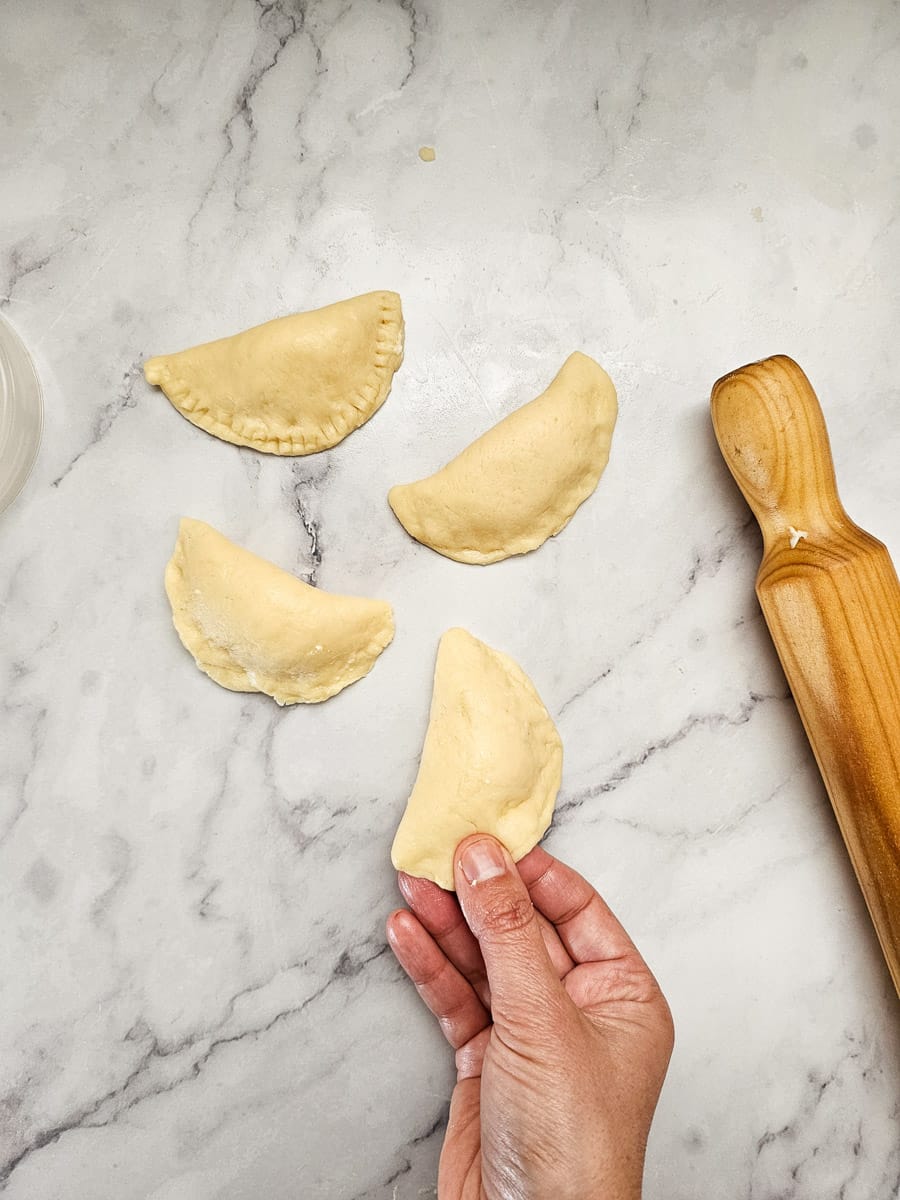
5. Fold over into a semicircle and press the edges firmly.
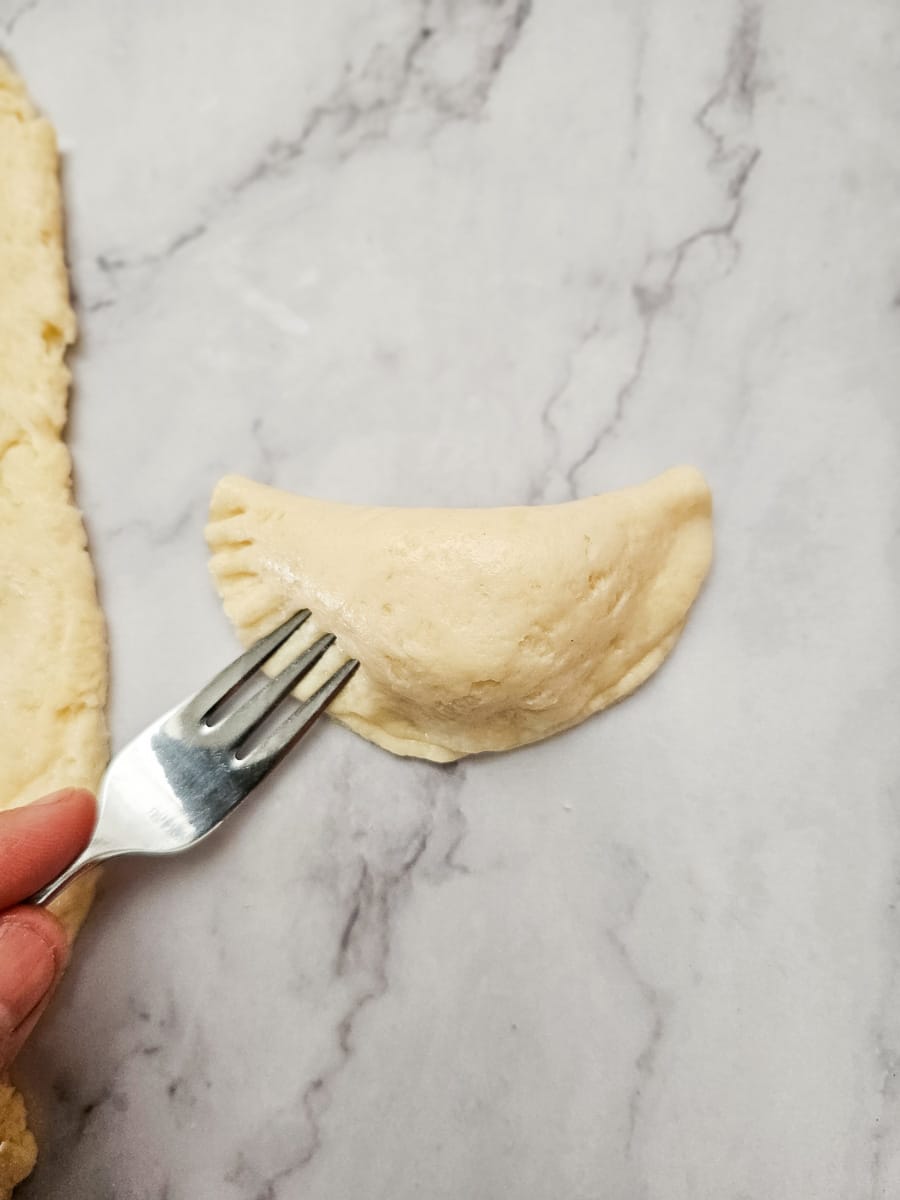
6. For a nice pattern and extra security, press the edges with a fork.
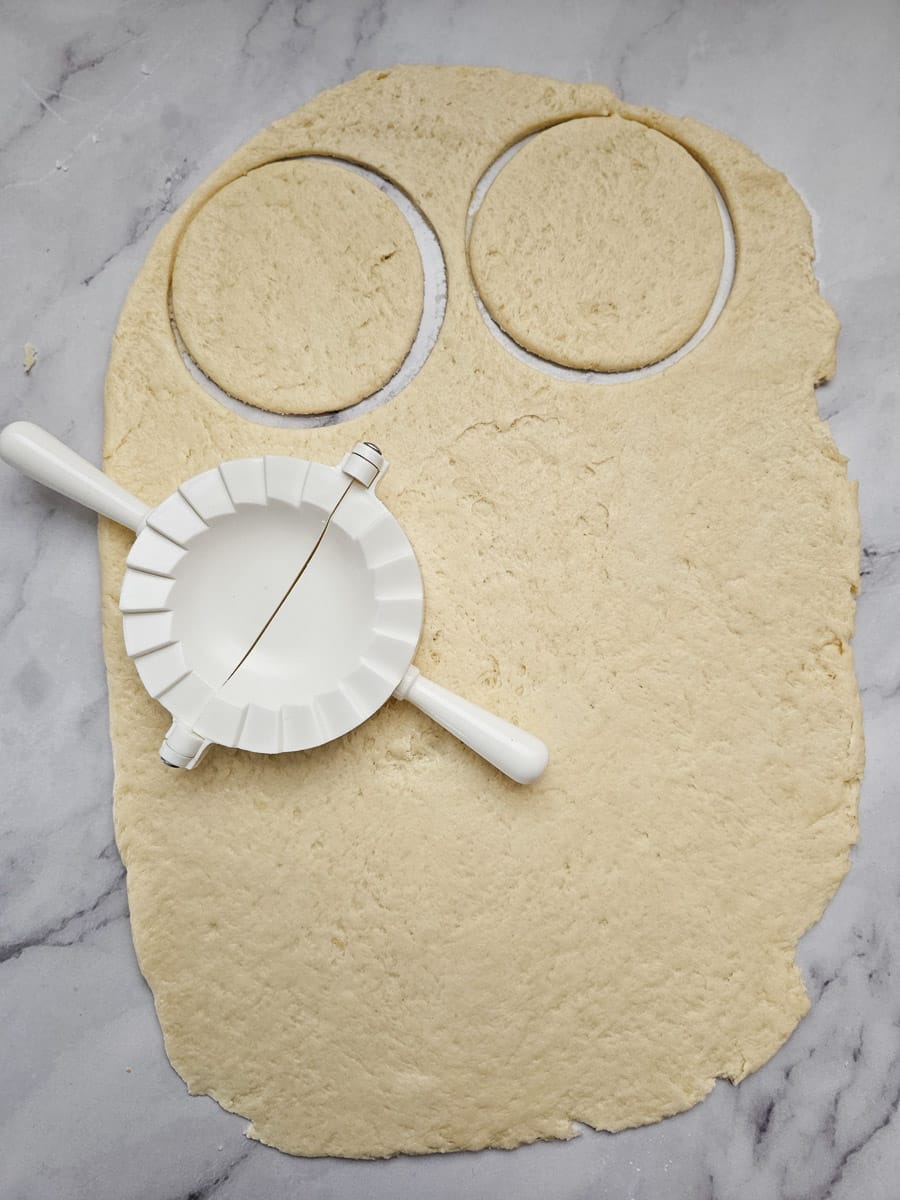
Alternatively, you could cut rounds with one of these pastry cutters, if you have one.
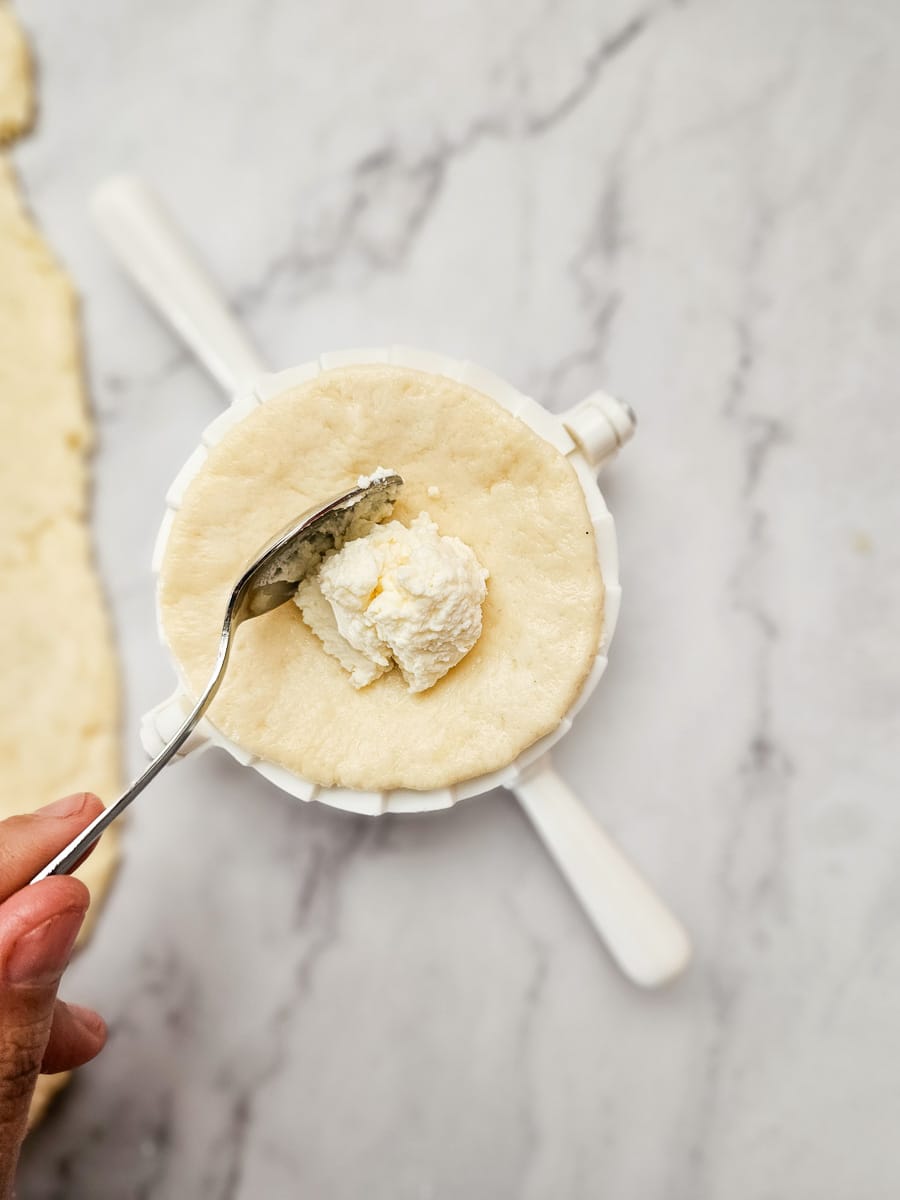
My mum uses this when making her cheese pastries, but I find it easier without.

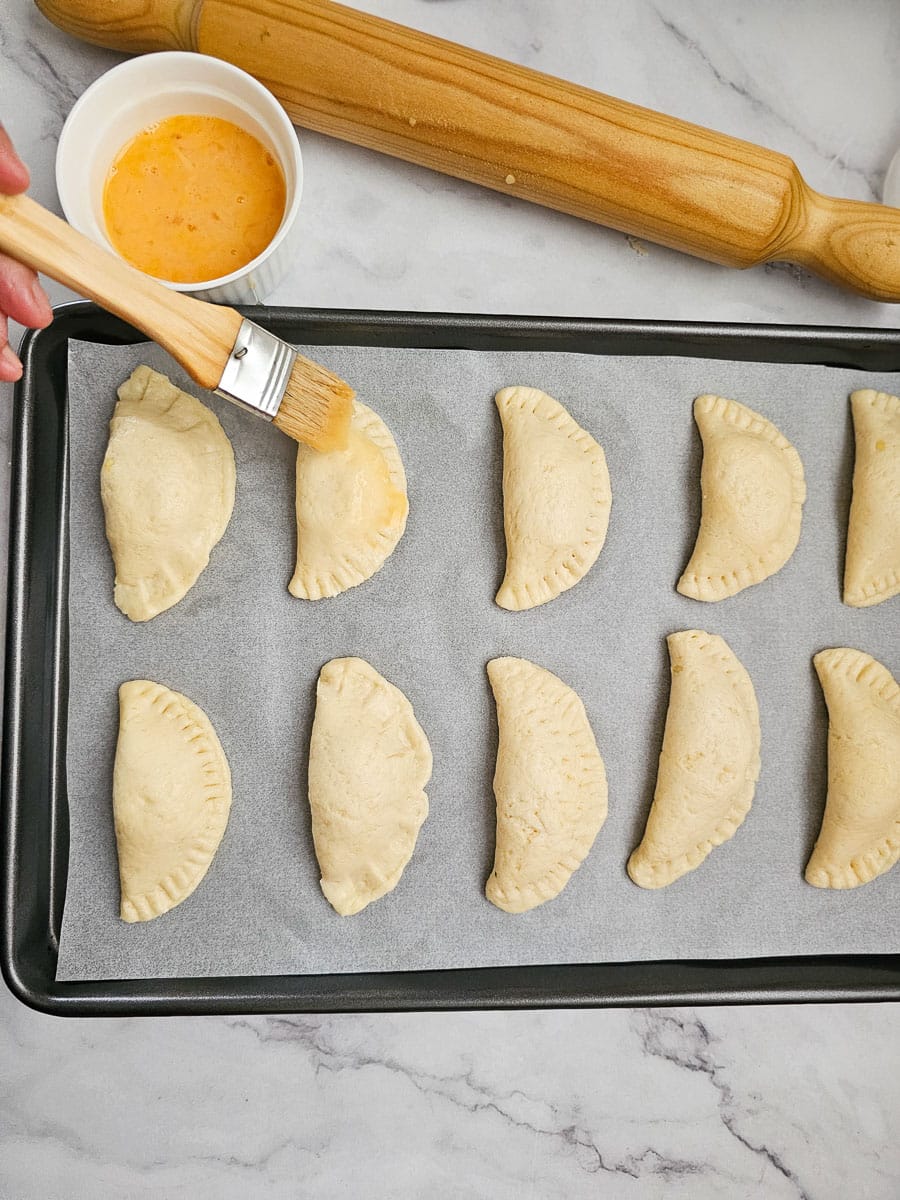
7. Arrange the pastries on a lined baking tray. Brush tops with the extra beaten egg.
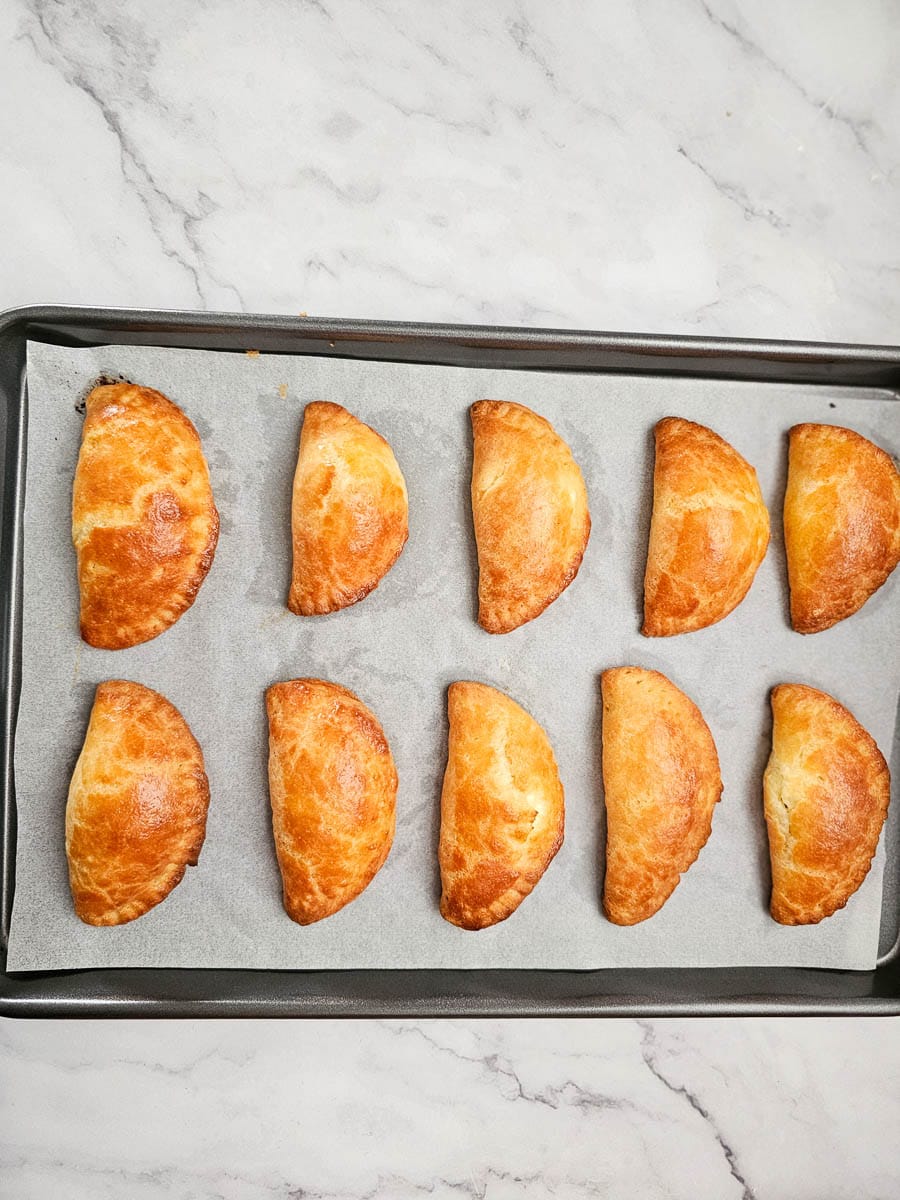
8. Bake in a preheated oven at 180°C (350°F) for 20-25 minutes, or until golden.
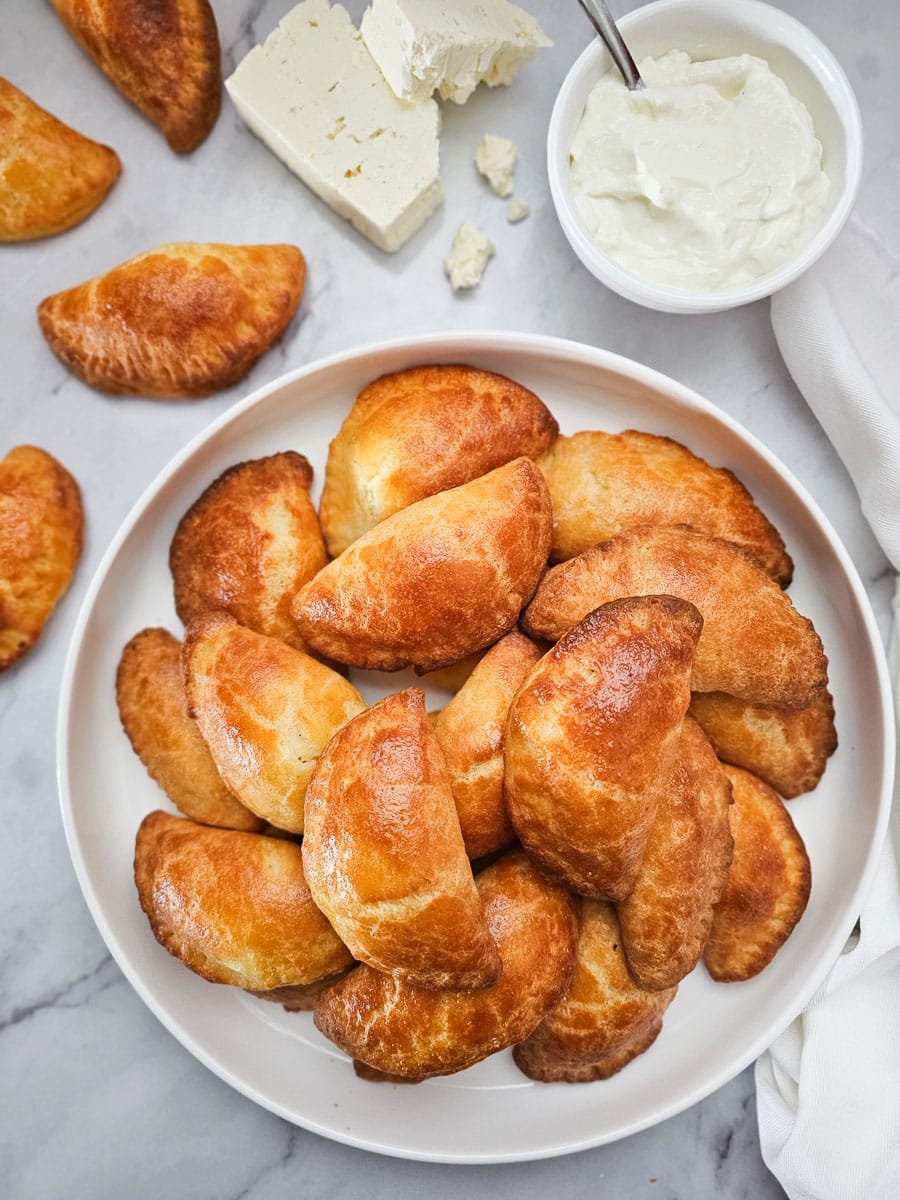

More Greek Appetiser Recipes
Looking for more Greek appetiser recipes? Take a look at these traditional favourites.
Tips for making Mini Greek Cheese Pastries (Tiropitakia Kourou)
Tips for a soft and tender dough
The yoghurt-based dough should be soft, smooth and slightly oily, but not sticky. Add the flour gradually, as the exact amount may vary depending on the yoghurt used. Roll the dough evenly to about 3mm (1/8 inch) thickness to achieve a good balance between pastry and cheese filling. If the dough feels too sticky, add a little flour, one tablespoon at a time, but avoid adding too much as it can make the pastry tough and this pastry is known for its soft, delicate texture.
Cheese filling variations
The cheese filling for these cheese pastries is very forgiving, so small changes in the amounts won’t affect the final result. You can easily adjust the feta, ricotta, or parmesan cheese amounts to suit your taste. My mum’s original recipe used 250 grams each of feta and ricotta, but I reduced it to 200 grams to avoid having too much leftover filling. For a flavour twist, try adding a pinch of nutmeg or some finely chopped fresh herbs like dill, parsley, or mint. Sprinkling sesame seeds on top before baking also adds a nice touch.
Why are my pastries opening in the oven?
If your folded pastries are opening, it usually means the edges weren’t sealed tightly enough. With this yoghurt-based dough, you don’t need to use egg wash to seal, as the dough is already moist. Instead, press the edges firmly with your fingers, making sure to seal about 1cm around the semicircle, and go over them with a fork if you want extra security. Also, avoid overfilling the pastries, as too much cheese mixture can push the edges apart while baking.
Can I prepare this recipe ahead of time?
Yes! If making ahead, you can bake the pastries until pale golden, then reheat later until fully browned and warmed through. Or, you can prepare the pastries up to the point of baking, freeze them on a tray and then bake straight from frozen when needed for fresh, golden pastries anytime.
Storage
Store baked pastries in an airtight container in the refrigerator for up to 3-4 days. To reheat, warm them in the oven or in an air fryer until heated through. For longer storage, freeze the baked pastries in a freezer-safe container or bag for up to two months and reheat from frozen in the oven until golden and warmed through.




